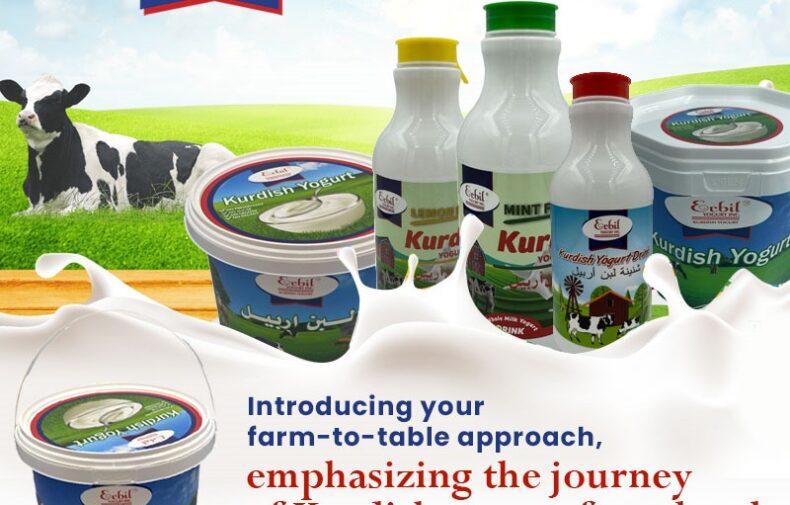The Making of Kurdish Yogurt
Kurdish yogurt is traditionally made from cow’s, sheep’s, or goat’s milk. The process of making this yogurt is a well-preserved art that has been passed down through generations. The essential steps involved in producing Kurdish yogurt include:
- Milk Selection: The choice of milk is a critical factor. Many Kurds prefer using raw milk for a richer and more flavorful yogurt. The milk is first heated to kill any harmful bacteria, and then it’s allowed to cool to a lukewarm temperature.
- Inoculation: A small amount of previously made yogurt is added to the lukewarm milk. This acts as the starter culture and contains the beneficial bacteria necessary for the fermentation process.
- Fermentation: The milk is left to ferment for several hours, usually overnight, in a warm and dark place. The specific duration of fermentation varies depending on personal preference, resulting in different levels of tartness.
- Straining: After fermentation, the yogurt is often strained to achieve its characteristic thickness. The whey is drained, leaving behind a creamy, luscious yogurt that is more akin to Greek yogurt in texture.

Cultural Significance
Kurdish yogurt holds a special place in the hearts of the Kurdish people. It is not just a dairy product but a symbol of their rich cultural heritage. Here are a few ways in which Kurdish yogurt is significant to the culture:
- Culinary Tradition: Kurdish cuisine relies heavily on yogurt. It is a staple ingredient used in various dishes, from savory to sweet. Some iconic Kurdish recipes that feature yogurt include mast-o-khiar (yogurt with cucumbers and herbs), mast-o-musir (yogurt with garlic), and various yogurt-based soups.
- Hospitality: Offering yogurt to guests is a common expression of hospitality in Kurdish culture. It is often served alongside traditional bread and other accompaniments, symbolizing warmth and welcome.
- Health Benefits: Kurdish yogurt, like other types of yogurt, is celebrated for its potential health benefits. It is a good source of probiotics, calcium, and protein, contributing to digestive health and overall well-being.
Versatility in Kurdish Dishes
Kurdish yogurt is not just a side dish but an integral component of many savory and sweet recipes. Some of the popular Kurdish dishes that incorporate yogurt include:
- Dolma: Kurdish dolma, or stuffed vegetables, are often served with a yogurt-based sauce. The tangy yogurt complements the rich flavors of the stuffed vegetables.
- Kurdish Kebabs: Grilled meats, a Kurdish specialty, are often served with a yogurt-based sauce, adding a refreshing contrast to the smoky flavors of the kebabs.
- Desserts: Yogurt is also used in Kurdish desserts like shireh, a sweet yogurt and honey dish, and firni, a creamy rice pudding.
- Ash Reshteh: A traditional Kurdish noodle soup, ash reshteh, is garnished with a mixture of yogurt, herbs, and fried mint.
Conclusion
Kurdish yogurt is a testament to the rich and diverse culinary traditions of the Kurdish people. Beyond its delicious taste, it reflects the deep cultural significance of food in the Kurdish way of life. From its preparation, cultural symbolism, to its versatile role in Kurdish dishes, Kurdish yogurt is a culinary gem that continues to be celebrated both within its homeland and around the world. If you haven’t had the pleasure of trying Kurdish yogurt, you’re missing out on a true gastronomic delight that offers a glimpse into the heart of this remarkable culture.


